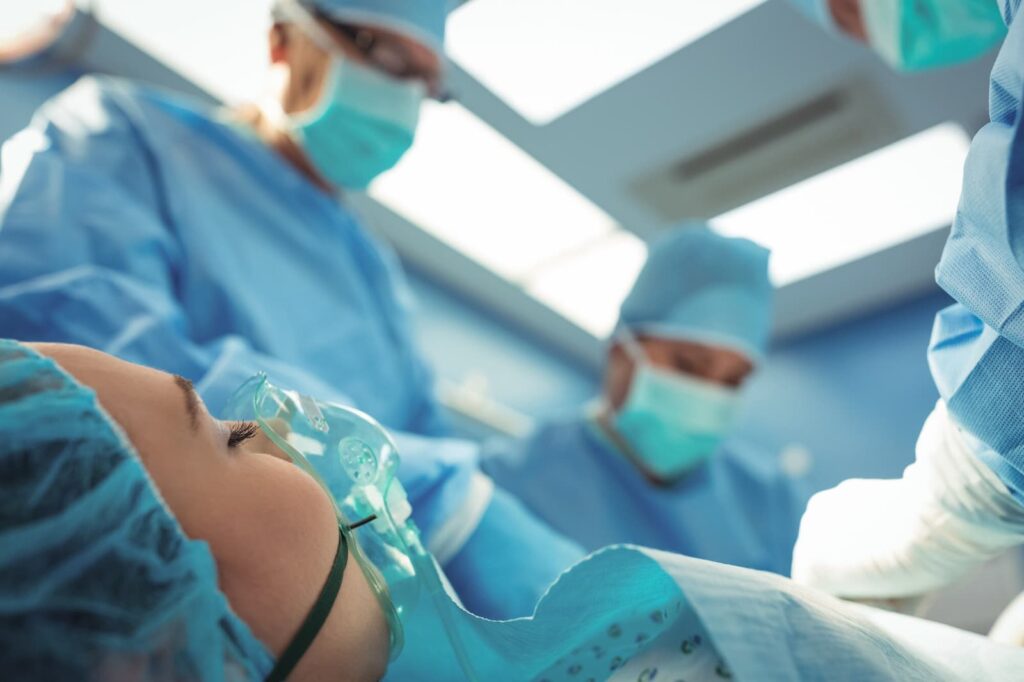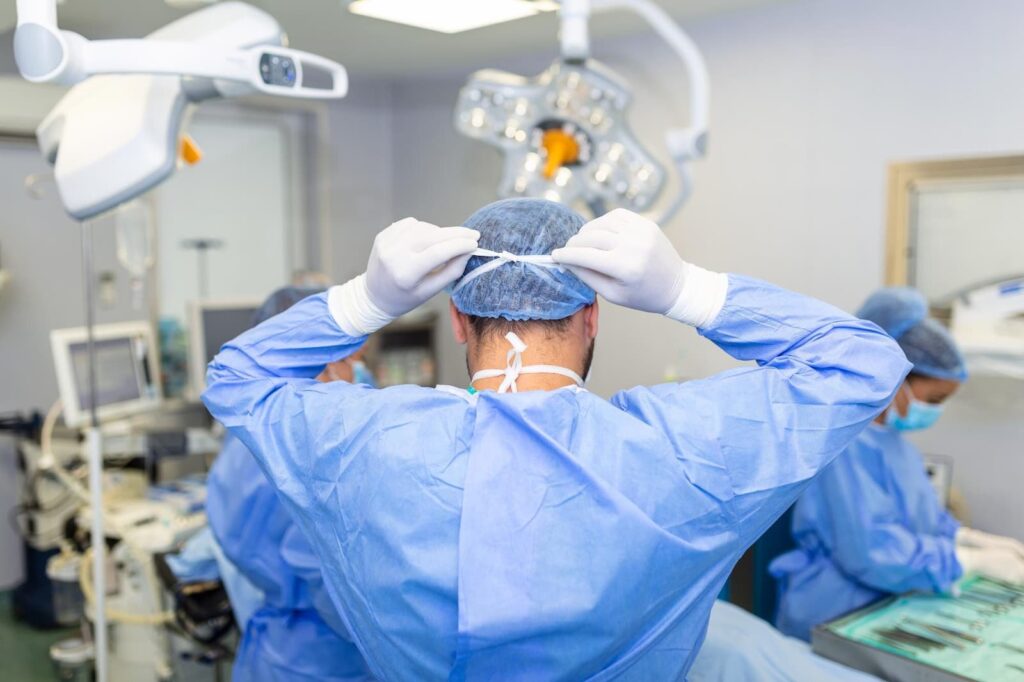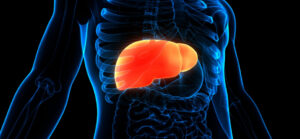
Living Liver Donation: Laparoscopy Scar Insights
The act of living liver donation is a nobility that inspires. It echoes the spirit of generosity, allowing one to provide a piece of their liver to improve another person’s life quality. Traditionally, this noble act implicated a significant surgical procedure, consisting of a large incision. This led to a more extended recovery period and potentially increased chances of post-surgery complications.
Yet, the world of medical technology is perpetually evolving. It has endowed us with the ability to perform liver donation via laparoscopy. This article delves deeper into the paradigm-shifting benefits of living liver donation through laparoscopy, its procedure, and success rates.
Understanding Laparoscopic Living Donor Liver Transplantation
Laparoscopic Living Donor Liver Transplantation (LLDLT) is a modern surgical method leveraging minimal invasion strategies to extract a part of a healthy donor’s liver. This technique showcases an ideal blend of medical precision and technological advances.
In essence, laparoscopic instruments are elongated, slender, and pliable, equipped with a camera at one end. This camera offers real-time imaging, granting surgeons a comprehensive internal perspective and aiding in the precise execution of the procedure.
Delving into the Advantages of Laparoscopic Living Donor Liver Transplantation
The breakthrough technique of Laparoscopic Living Donor Liver Transplantation (LLDLT) brings a bounty of benefits compared to the traditional approach of liver donation. Let’s explore them:
Minimized Invasion, Maximized Comfort
A crucial advantage of LLDLT is the minimal invasion it entails. The procedure involves making smaller incisions resulting in significantly less discomfort and scarring. This factor directly contributes to a shorter hospital stay, expediting the overall recovery process.
Accelerated Recuperation: Back to the Norm
One striking characteristic of laparoscopic surgery is the sped-up recovery timeline. Donors can reintegrate into their routine activities in just a few weeks, which is a substantial improvement from the traditional method’s several months.
Slashed Risks with High Precision
LLDLT substantially lowers the probability of complications such as haemorrhaging, infection, and hernias. How? The answer lies in the precision that laparoscopic surgery offers. With the aid of advanced imaging, surgeons can navigate the surgical area with high accuracy, reducing risks.
Enhanced Cosmetic Outcomes
Small incisions made during laparoscopic surgery lead to better aesthetic results. This aspect is particularly appreciable for donors wary of conspicuous scarring post-surgery.
Less Blood Loss, More Safety
LLDLT is associated with reduced blood loss compared to traditional open surgeries. This benefit can be attributed to the accurate surgical procedure and the smaller incisions involved.
Postoperative Wellness: The Laparoscopic Edge
Laparoscopic procedures typically result in lower postoperative discomfort, improved graft function, and quicker recovery for both the donor and the recipient. It also decreases chances of complications such as wound infections, incisional hernias, and bile leakage.
Surgical Precision Reimagined
The enhanced visualization and accessibility provided by laparoscopic techniques allow the surgical team to perform the procedure with unmatched precision. This not only leads to a successful operation but also significantly reduces the potential risks involved.

Understanding the Innovative Pure Laparoscopic Donor Technique for Liver Donation
The Pure Laparoscopic Donor (PLD) method is a progressive derivation of the traditional Laparoscopic Living Donor Liver Transplantation technique (LLDLT). This groundbreaking approach involves the complete removal of the liver lobe using laparoscopic instruments, entirely bypassing the need for larger incisions. This advancement leads to even less invasive surgeries, facilitating an expedited recovery process for the donor.
A Step-by-step Dive into the Procedure of Laparoscopic Liver Donation
The journey of a laparoscopic liver donation unfolds in several meticulous stages, each crucial in ensuring a successful operation and optimal outcomes:
Donor Fitness Evaluation
The first phase involves a comprehensive appraisal of the donor’s health. This assessment ensures that the donor’s body is capable of withstanding the surgery and healing effectively post-operation.
Introduction of Anesthesia
The procedure is carried out under general anesthesia, meaning the donor experiences no discomfort or consciousness during the process.
Creation of Incisions
The surgeon makes a series of diminutive incisions in the abdomen. These act as entry points for the laparoscopic instruments to be introduced into the body.
Liver Lobe Dissection
Leveraging specialized laparoscopic liver transplant apparatus, the surgeon carefully separates the liver lobe from the surrounding tissues – a process known as ‘dissection’.
Extraction of the Liver Lobe
The isolated liver lobe is then cautiously removed through one of the small incisions made earlier. This extraction is carried out using the laparoscopic instruments, ensuring minimal invasion and maximal precision.
Sealing the Incisions
In the final step, the incisions are closed using stitches or staples, marking the conclusion of the surgical procedure.
A Comparative Study: Laparoscopic versus Open Liver Donation
As medical technology continues to evolve, innovative techniques like laparoscopic liver donation are transforming the field of organ transplantation. When compared to traditional open liver donation, the laparoscopic technique offers several distinct advantages:
Mitigated Discomfort and Scarring
Unlike open liver donation, which involves a significant incision, laparoscopic liver transplantation is known for its minimal invasiveness. The surgical procedure involves relatively tiny incisions, resulting in less post-surgical discomfort and reduced scarring. This element of reduced physical impact often serves to ease the donor’s psychological apprehensions.
Expedited Recovery Time
Laparoscopic surgery has revolutionized the recovery timeline in organ donation. As opposed to the protracted recovery period associated with open surgery, laparoscopic liver donation allows donors to bounce back to their regular activities much quicker, often within a few weeks.
Decreased Complication Risks
The precision involved in laparoscopic surgery significantly cuts down the risks of postoperative complications. Instances of bleeding, infections, and hernia are considerably lower in laparoscopic procedures when compared to their open surgery counterparts.
Enhanced Cosmetic Results
One of the most notable advantages of laparoscopic surgery is the superior aesthetic outcome it offers. The smaller incisions result in less noticeable scars post-recovery, a feature particularly appealing to donors conscious about the cosmetic aftermath of the procedure.

Analyzing the Success Rates of Laparoscopic Liver Donations
Given the myriad of benefits that laparoscopic liver donation offers, the question of its success rate relative to traditional methods often arises. Studies have shown that the success rates of laparoscopic liver donation align with that of open donation. According to a research article published in the Annals of Surgery, both one-year and five-year survival rates for recipients of liver lobes via laparoscopic donation were equivalent to those of recipients receiving liver lobes via traditional methods. It’s encouraging to note that the benefits of a less invasive procedure do not compromise the success rates.
Who Can Be a Laparoscopic Liver Donor?
While the benefits of laparoscopic liver donation might make it an attractive option, certain criteria must be fulfilled to ascertain donor eligibility for this procedure:
Age Requirement
Donors must be between 18 to 55 years old. This stipulation ensures that the donor is mature enough to make an informed decision and young enough to recover effectively post-donation.
Body Mass Index (BMI) Restriction
Donors are required to have a Body Mass Index (BMI) of less than 30. This requirement is in place to minimize potential health risks associated with overweight or obese individuals undergoing surgery.
Liver Anatomy Suitability
A key determinant of a donor’s eligibility for a laparoscopic procedure is the compatibility of their liver’s anatomy with the requirements of the surgical technique. A comprehensive examination, including imaging tests, will be performed to confirm this aspect.
Overall Health Status
A general stipulation for laparoscopic liver donation includes the donor being in good health with no significant medical conditions. A series of medical tests and evaluations are conducted to ensure this.
In Conclusion
In the grand spectrum of medical advancements, laparoscopic living donor liver transplantation stands out as a beacon of progress. Its minimally invasive nature coupled with successful outcomes has revolutionized the liver donation process. Although the donor scar is an inevitable part of this journey, it serves as a symbol of hope, resilience, and the profound act of giving. Indeed, each liver donor scar is more than just a physical mark; it’s a distinguishing badge of honor, signifying a selfless contribution to granting life’s second chance to another.

